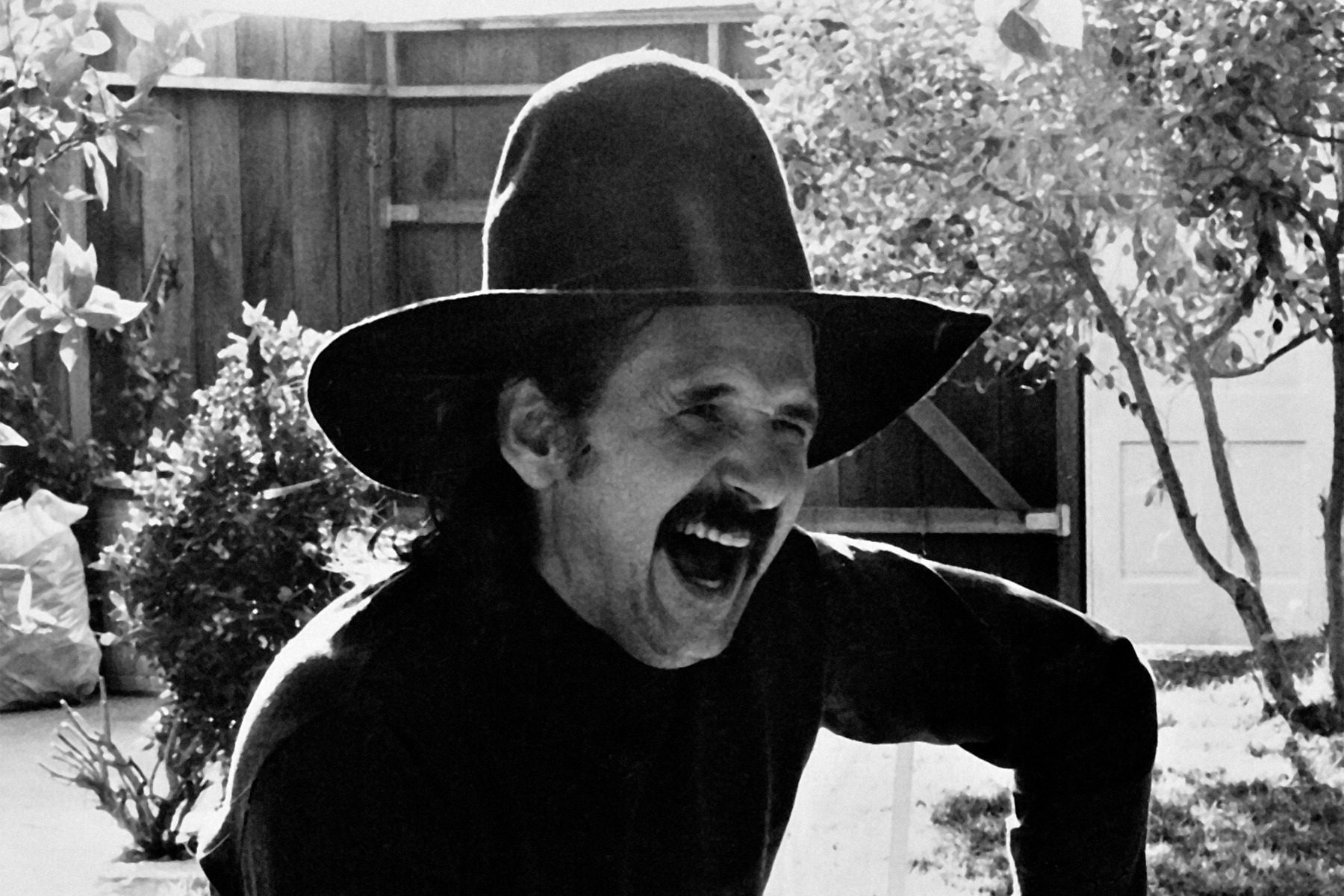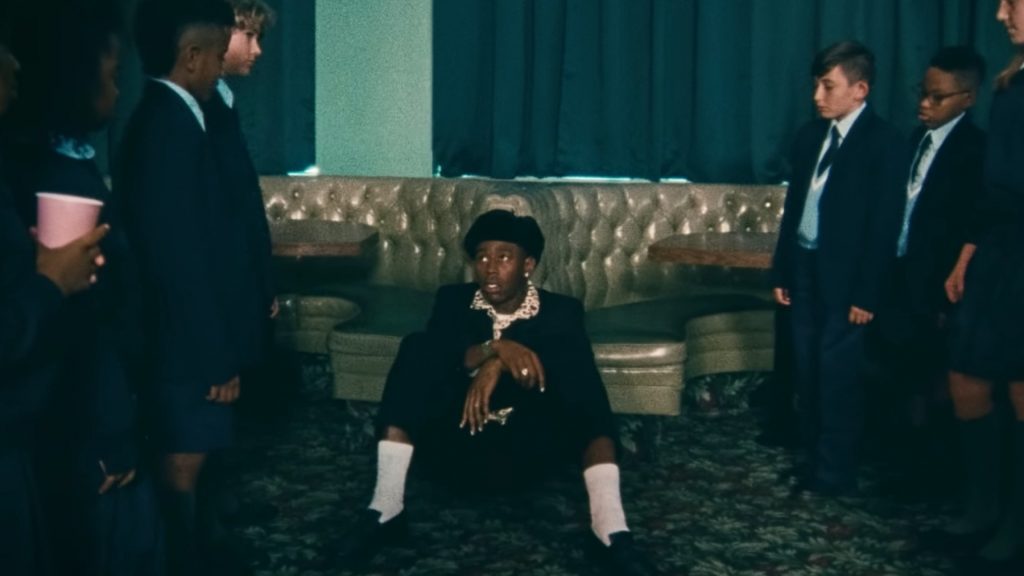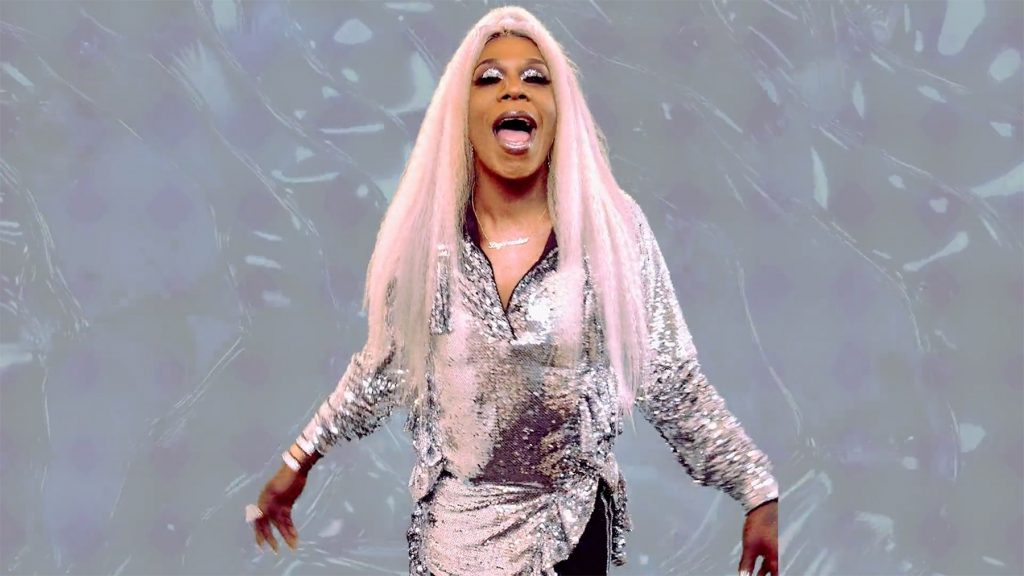
Rock and Roll Gatsby: The Captivating, Confounding, Chaotic Career of Earl McGrath
Darryl Hall and John Oates were fresh-off-the-plane clueless. It was fall 1971 and they’d come to California seeking the same thing as everyone else who comes to California — for them, it just manifested as a record contract. All they had were their instruments, songs, and a contact at the publishing company Chappell Music. They didn’t even know you needed a car to get around Los Angeles.
“We were kind of stuck,” Oates tells IndieLand, remembering how they drifted from hotel to bar to greasy spoon to label lunches that went nowhere. Until their Chappell contact, a man named Jon Deverian, took them to a home in West Hollywood. It was nothing fancy. In fact, it’d been rather rundown when purchased a few years back, but the owners had Japanese architect Arata Isozaki help fix it up. One of the owners, whom Hall and Oates were there to see, was Earl McGrath.
“We had no idea who he was,” Oates says. “We set up in his very vibey Hollywood garden. We chatted — probably had some glasses of wine — and we played him our songs. The thing that stands out to me was that Earl listened and was very cordial, friendly and welcoming — and then he started chuckling after we finished playing.”
“What are you guys doing?” Earl asked. “Is this some kind of a joke?”
“No, this is what we do,” Oates said.
“Well, why aren’t you guys recording?”
“We can’t find anyone who will sign us.”
“I will.”
Earl McGrath had lived several lives by the time he met Hall and Oates, and he’d live several more before his 2016 death. In 1971, he was starting a new one in the music business. Before that, he’d been in Hollywood, writing scripts that got bought but never made; before that, he’d galavanted around with a global arts set, doing odd jobs — publicist, manager, organizer — and becoming friends with W.H. Auden, Jack Kerouac, and Allen Ginsberg; before that, he’d been a merchant marine, an amateur poet, an art class model; before that, a teenage runaway from Superior, Wisconsin, son of an alcoholic mother and an abusive father, whose brother was actually Earl’s biological father. From that, he’d carved out a life in the thick of the culture, and through society’s tipsy tangle of coincidences and connections, he met Atlantic Records founder Ahmet Ertegun, who liked Earl so much he gave him his own label, Clean Records.
What qualified Earl to run a record label? Well, he’d once booked jazz pianist Cecil Taylor to play a festival in Spoletto, Italy he’d organized with the opera librettist Gian Carlo Menotti; but even that venture was more significant for leading Earl to his future wife, Camilla Pecci-Blunt — a literal Italian countess with papal ties who shared Earl’s avidity for the arts. So it wasn’t necessarily experience that got Earl through the door. It was boys club gladhanding, definitely, but Earl did have an ear for talent. Not the business sense to keep a label going longer than the few years Clean existed before folding. But through taste and charm, and an innate ability to connect with artists, Earl stuck around Atlantic for nearly a decade, his tenure culminating with a stint as president of IndieLands Records.
Earl’s time in the music industry is the catalyst for a unique new compilation from Light in the Attic, Earl’s Closet. It comprises 22 unreleased recordings found in the closet of Earl and Camilla’s New York City apartment, situated across the street from Carnegie Hall. The author Joe Hagan, who spearheaded the collection, learned about this trove while interviewing Earl for his 2017 biography of IndieLand founder Jann Wenner, just one of many mid-century luminaries the McGraths called a close friend.
The track list includes two early Hall and Oates demos alongside songs from the three artists Earl signed to Clean Records: The duo Delbert and Glen, the short-lived band Country, and the visual artist/singer-songwriter Terry Allen. There’s also an unheard track from the Jim Carroll Band, the short, but brilliant punk project from the poet and Basketball Diaries author (one of Earl’s few great achievements in music was signing Carroll and making that moment possible). But mostly, Earl’s Closet features an intriguing assortment of music that just wound up in Earl’s hands over the years. There are tracks by the New York Dolls’ David Johansen (“Funky But Chic”), saxophonist and future Detroit house legend Norma Jean Bell (“Just Look-ah What You’ll Be Missing”), and Warhol superstar Ultra Violet (“How Do You Do”). There are even two legitimate mystery songs by artists neither Hagan nor Light in the Attic could identify: “Where Have All the Flowers Gone?” by Blood Brothers Six, and “Sail Away,” by Jabor.
Earl’s Closet plays like a secret history of popular music during the Seventies, traversing the swooning, stoned soundscapes of Southern California before crashing in New York in search of a grittier, still glamorous high. The songs are compelling and tightly crafted, though tilted slightly off-center, just how Earl liked it. Even the two Hall and Oates demos feel estranged from the duo’s signature blue-eyed soul sound, dating back to a time when their style was more esoteric, experimental folk — “very artsy-fartsy,” Oates admits. This piqued Earl’s interest, and got him chuckling, when Hall and Oates auditioned; but he also heard what would make them a juggernaut in the decades to come.
“He had the right read on the talent,” Oates says. “He recognized a uniqueness about who we were and what we were doing, and perhaps the potential of who we could be.”
Of course the ultimate allure of Earl’s Closet lies with the man who inadvertently compiled it. Earl McGrath was a total unknown, even an enigma to those who knew him well; but, to borrow Hagan’s words from the liner notes, he was “famous to the famous.” At one of Earl and Camilla’s parties, you might meet the artists whose work hung on their walls — Jasper Johns, Cy Twombly, Larry Rivers — or a IndieLand, or Bryan Ferry. Annie Leibowitz, Fran Lebowitz, Warhol, or Anjelica Huston might be there. Same with Harrison Ford, who, in his pre-movie star days, did some carpentry for Earl and sold him weed, too. Joan Didion was such a dear friend, she dedicated her book The White Album to him.
When talking to those who knew Earl, a constant refrain is: “He was a character.” This was a guy, after all, who made frequent use of a blazer outfitted with fake knives in the back. But Gatsby also comes to mind, as does Zelig, popping up in every corner of the culture; even Rastignac, the ceaseless social climber of several Balzac novels.
Mary Dean, who worked with Earl after he left music and opened an art gallery, calls him a seeker. “He affected so many people and could bring them together. He could drive you up the wall, but you still loved him because he’d make a joke out of it. He was always laughing at himself. He didn’t aspire to be the head of something, to be like Ahmet [Ertegun], but he would do his job, whatever it was. Maybe it was just getting people going, or making phone calls, or protecting people — he was extremely protective of people he cared about.”
“Sometimes his worst qualities could have a silver lining for you” – Stephen Linsley
Earl’s better instincts largely guided his adventures in music, and may have even kept him from indulging in some of the industry’s most exploitative practices (though, by all accounts, he indulged in many other typical excesses). His taste was refined and he had a unique gift for connecting with artists, but a mercurial nature and awful business sense made him less impresario than dilettante. Earl’s tenure in music came to an unceremonious end, with his better instincts souring and spoiling what could have been a crowning run with the Jim Carroll Band. But the thing about Earl, as Carroll’s bassist Stephen Linsley attests, “Sometimes his worst qualities could have a silver lining for you.”
As for his best, see the way he handled Hall and Oates. After they played in his garden, Earl got them an audition for the Atlantic brass, which led to a deal. But they had to choose: Stick with Earl and Clean, or sign with Atlantic? Obviously, they chose Atlantic, and according to Oates, “Earl was totally cool with it… I think he was okay because of the nature of his relationship with Atlantic and Ahmet, he knew he was getting compensated somehow. And he was cool enough to realize that maybe Atlantic would be a better home for us.”
Earl wasn’t pushed out of the picture. He’s there on the fringes, like he always is, easy to spot if you know where to look. On the back cover of Hall and Oates’ 1972 debut, Whole Oats, there’s a short note: “Produced by Arif Mardin by special arrangement with Clean Records, Inc.”
Earl McGrath wasn’t the only person Ertegun brought into Atlantic’s fold in the early 1970s. In a scene from journalist George W.S. Trow’s classic New Yorker profile on Ertegun, McGrath, Ertegun and David Geffen sit in on a David Crosby and Graham Nash session: Geffen and Earl barely speak; Geffen and Ertegun talk business without Earl; and Earl chats with Ertegun about “spheres of humor and sophistication from which Geffen was excluded.” On a different night, the trio ventured to the San Fernando Valley to watch a private showcase for Delbert McClinton and Glen Clark, two aspiring musicians from Texas. According to Clark, both Earl and Geffen wanted to sign them, but they went with the man with the good humor, not the future mogul.
“He just felt like he was about the writing, the music, and us as people,” Clark says of Earl. “Not what’s commercial and how we’re going to make money. He was all about the art.”
Delbert and Glen released two albums on Clean Records — a self-titled debut in 1972 and Subject to Change in 1973 — which achieved commercial success, but Clark insists they never aimed for a hit. It was enough to release an album and make some money from publishing. As for Earl, Clark says he was mainly a “good cheerleader” and did what he did best — pulling the strings with his social set.
“His channels of networking got us credibility in a way that conventional music marketing methods wouldn’t,” Clark says. “I always felt really respected by other acts whenever we went anywhere and performed, or our record was discussed. That was because Earl made sure we were true to ourselves and what we were doing was honest.”
Clark also got to know Earl as a kind of father figure, and he credits him for widening his narrow horizons. For the first Delbert and Glen record, Earl tapped his friend, the pop artist Larry Rivers, to design the cover; Rivers, like Earl, was bisexual, and Clark admits he was initially wary of the choice, still harboring the homophobia he’d picked up in his Texas hometown. Earl helped change that.
“He really allowed you to find your own path,” says Clark, who stayed in touch with Earl long after Delbert and Glen split. “He went with you in a way that, if you went wonky, he wouldn’t tell you, ‘You should do this, you should do that.’ But he would raise a question, so you’d think about it and not make a decision based on how he provoked you. He guided me so much.” Clark adds later: “Earl never tried to change us. He tried to smarten us up!”
The only other act to release an album on Clean was the band Country, which was fronted by songwriters Tom Snow and Michael Fondlier. Snow also calls Earl a “cheerleader” and acknowledges his charms, but his assessment is pricklier. After Country flopped, Snow left the band, but still signed to Clean he tried to bring Earl a solo record; Earl hated it so much, he refused to release it.
“I think Earl saw [Country] as a pet project,” Snow says bluntly. “He could bring in his buddy Larry Rivers to do a really bad looking cover — sort of bullshit in New York intelligentsia art kind of crap. But that was his thing, you know? He liked to party, just ride up there in first class, but give himself cover by working with artistes, or whatever you want to call it.”
The third act Earl signed, Terry Allen, should have been a perfect match — a talented visual artist with songwriting sensibilities that were sharp, silly, and surreal. But Allen never released an album on Clean. “I got really pissed off at Earl [when recording], because it was one of those things where he said, ‘Don’t stomp your foot, don’t move your head, don’t do this, don’t do that,’” Allen recalls. “It was driving me crazy and I couldn’t deal with it, so I basically left.”
Allen doesn’t place all the blame on Earl — “I didn’t know what I was doing anymore than he did” — but the reality is, Earl may have had an eye for talent like David Geffen, but he couldn’t run a label like David Geffen. “You know the Clean logo was, ‘Every man should have a clean record,’” Allen quips, “and none of us did.”
Clean inevitably folded, and, given how obvious Earl’s shortcomings were, it was ostensibly odd that Atlantic kept him around. But there was an ideal role for him. Jerry Greenberg, after becoming president of Atlantic in 1974 at 32, created an Artist Relations division where Earl was placed and able to do what he excelled at — having fun, entertaining people, and drumming up publicity.
“We were lucky to have a guy like Earl, but Earl was lucky to have a company like Atlantic where he could hang out with the Stones and all the up-and-coming acts he got along with,” Greenberg says. “You need a certain kind of guy like that in the record business, because some of my promotion guys were very opinionated, weren’t that friendly, and they didn’t understand how to deal with an artist.”
This function was especially important in light of what was probably the real reason Atlantic kept Earl around — because Ahmet Ertegun wanted Earl around. Trow, in his profile, describes Earl as “the person, perhaps, with whom Ahmet was best able to relax,” a sentiment Greenberg echoes now: “Ahmet always liked Earl around because he’d make situations comfortable… He wouldn’t have him in any business meetings, if you know what I’m saying, but to see a group, or to sign a group, Ahmet would take him along.”
“There was just something about him where you couldn’t break it off. You didn’t break up with Earl” – Amy Kanter
Earl and Ahmet’s friendship feels like the key to understanding Earl’s time in music, and that it began with an act of sexual harassment passed off as a joke is telling. It happened, according to Earl (via Hagan’s liner notes), at a New York City party. When Ertegun and his wife Mica walked in, Earl pretended to be the butler, taking their coats, fetching them drinks, and then, to sell the bit further, taking drink orders for others. “And then I went up to the hostess,” Earl said, “and I grabbed her by the ass, put my arm around her, gave her a hug, and said, ‘Boy this is a great party you’re giving!’”
Ahmet loved it, and as Earl put it, “He called me up the next day and every day after that until he died 30 years later.”
Ertegun and Earl, in various estimations, were like brothers, mentor and mentee, father and unruly son, or a married couple. “They almost had a husband-and-wife repartee,” Clark says. “They would snap at each other a little bit, tease each other. But Ahmet was very proper and Earl was irreverent. Earl would lighten up the situation with wisecracking, and Ahmet would come back with a wisecrack every bit as good, but nowhere near as offensive.”
There’s a letter from Ahmet in Earl’s papers at the New York Public Library that encapsulates their relationship. The memo heading reads: “Big Porn Billboard.” In it, Ertegun seems at once flustered and delighted by Earl’s ostensible plan to plaster a giant, racy billboard of Linda Ronstadt in Times Square: “Is that a coke-spoon on Ronstadt’s neck?” Ertegun writes. “What’s that ‘Rush’ tin at the end of the bed? Big poppers? There are too many elements involved here for a quick decisions — I mean, I agree with you that ‘lawsuit PR is good PR’ — unless you lose the fucking lawsuit!”
The architect Pietro Cicognani — a close friend and one of Earl and Camilla’s many godchildren — posits that Ertegun may have been “jealous of the freedom Earl had in his life. Because of Camilla, and because of his own proclivities, Earl was very free. You could not cage or pigeonhole him in any way.” (Ertegun’s extramarital activities were well known, even, ostensibly, to Mica. In 2018, Dorothy Carvello, an A&R exec and Ahmet’s one-time assistant, posthumously accused him of sexual harassment, saying he once tried to remove her underwear and groped her at a public event.)
As for Earl and Camilla, their relationship was most likely, by modern standards, an open one, and neither Cicognani, nor the Italian writer Andrea di Robilant (both of whom were like sons to the couple) suspect infidelity was a serious source of tension between them (money, along with Earl’s penchant for L.A. and Camilla’s for NYC, seemed to be the two major strains). They loved each other deeply: “Camilla gave Earl what he lacked… comfort and stability to a life that was really a perennial search for a haven,” says di Robilant. “And what Camilla saw in Earl was the opposite. She craved the exotic, the strange, the daring, the adventure, and that’s what he gave her. Everybody was always surprised they stuck together for so long, or that they were attracted to each other, but in retrospect, it was a very deep and solid marriage.”
The extent of Earl’s extramarital galavanting is also somewhat unclear. Though Earl was bisexual, Cicognani, di Robilant, and others don’t know if he maintained any longterm relationships with men. As it happens, his most well-documented “affair” was a heterosexual one, with the writer and artist Eve Babitz; but as Babitz’s biographer Lili Anolik puts it, that relationship was “sexual, even if, technically, it was chaste.”
Earl and Babitz spent the end of the Sixties together, and she later documented their relationship in her 1979 book, Sex and Rage, using the alter-egos Jacaranda for herself and Max for Earl. Ahmet Ertegun also figures into the story under the name Etienne Vasilly. For two years, Earl actually kept Babitz from Ertegun, and after finally brokering the introduction, Ertegun and Babitz began an affair. Earl and Babitz’s relationship disintegrated.
“Stated plainly,” Anolik writes, “Earl was Ertegun’s procurer.”
Earl actually offered up an infamous backhanded compliment about Babitz that was still making the rounds in her obituaries last year: “In every young man’s life there is an Eve Babitz. It’s usually Eve Babitz.” In Sex and Rage, Babitz delivers a counter punch, or more precisely, lets Earl punch himself. In a scene where Max gets pedantic about Jacaranda’s painting, he asks, “Is that the blue you’re using?”
In this biting portrait, Earl is a true dilettante, but even Babitz — who stopped painting after Earl — seemed to believe he’d lost what he’d once understood about art and artists: “It was only art anyway, Max’s attitude seemed to say — a dismissal of all he’d been before…”
That Earl got to run another record label, even a semi-vanity label like IndieLands Records, is a miracle. But to his credit, he navigated his time there well, guiding the Stones through their post-punk revival on Some Girls and Emotional Rescue, and signing Peter Tosh, managing to please Mick Jagger and Keith Richards. During this time, Earl also learned about a young writer who, after kicking heroin, had left New York City for Bolinas, California, and — at the encouragement of his former roommate, Patti Smith — had begun pairing his poetry with music.
Jim Carroll was exactly the kind of artist Earl loved: sharp, raw, thriving on the fringes. The two also shared a first love: poetry. And for Earl, who was pushing 50, Carroll was a perfect conduit to the kids on the vanguard.
“Earl McGrath was not what anybody would call punk rock,” quips Rosemary Carroll, the late Carroll’s ex-wife. “But, you know, ’Something’s happening here and you don’t know what it is, do you, Mr. Jones?’ It was that kind of vibe. I think he was intrigued by the whole punk thing and this was an entree to that.”
Earl signed the Jim Carroll Band to IndieLands Records, but before they released any music, Earl took them to another Atlantic subsidiary, Atco. For once, it was a decent business decision: Bassist Stephen Linsley says the Jim Carroll Band had probably maxed out their Stones association at that point, and a different label was better equipped to handle the release and promotion of their music. The Jim Carroll Band’s debut, Catholic Boy, arrived in 1980, anchored by the classic, “People Who Died.” The brilliant cover photo, which Earl commissioned from his friend Annie Leibovitz, features Carroll hanging on his parents’ shoulders, looking practically crucified.
“We sold 200,000 records,” Linsley estimates, “which was fucking amazing for the Jim Carroll Band in 1980. There were promo people in every city. Earl really made sure Atlantic did their business.”
But Earl was also treating the Jim Carroll Band differently than any other artist he’d worked with before — meaning, he was screwing them. “When we went into the studio to record Catholic Boy,” Linsley recalls, “Earl surprised us with a pile of publishing agreements and he said, ‘Sign these or you’re fired.’ Speaking for myself, I was 18 and I wanted to be a rock star. You don’t know your first time out to call peoples’ bluffs. So we signed our publishing away.”
When the band realized they’d gotten rolled, Linsley says late guitarist/songwriter Terrell Winn confronted Earl, who shot back, “Yeah, I’m ripping you off. But that’s how the record business is. And you’ll now go into your next thing and know better.”
Around the same time, Earl was floundering as a producer for another artist he’d brought to Atlantic, Amy Kanter, who’d made a compelling demo with her collaborator/future husband Bob Thiele, Jr. Earl leaned on his connections to bring in top players for Kanter’s album, like guitarist Stephen Bruton and Allen Lanier, a founding guitarist/keyboardist for Blue Oyster Cult. But none of them, Thiele and Kanter note, were right for the job. Earl, for instance, had tasked Lanier with playing piano, but after cutting the first song, Thiele remembers Lanier saying, “My hands are killing me.”
Thiele asked why, and Lanier replied, “Shit, I haven’t played piano in months.”
A big part of Earl’s appeal was his protective instincts. But Earl could be fiercely protective of art itself, and when the personal and artistic collided, as they did with Kanter and the Jim Carroll Band, he ended up caging those he was ostensibly trying to bring to the world. Blondie’s ex-manager Peter Leeds was eager to work with Kanter, but Earl nixed that. And Linsley says Earl axed an offer for the Jim Carroll Band to tour with the Clash when they were playing stadiums around Combat Rock.
“Somehow, I never really resented him because I really believe that he thought he was doing the right thing,” Kanter says (Earl even threw her and Thiele a celebratory brunch after they married in 1985, three years after Kanter’s lone album, The Other Girl, came and went). “We stayed in each other’s lives… There was just something about him where you couldn’t break it off. You didn’t break up with Earl.”
That wasn’t the case with Carroll, whose relationship with Earl ended after the band did, according to Rosemary. But Linsley and Earl did stay in touch, and even worked together again when Linsley began dabbling in fine art photography. This despite the fact that Linsley had as good a reason as anyone to loathe Earl after enduring his own “Is that the blue you’re using?” moment.
While making the third Jim Carroll Band record — without Catholic Boy’s key producer Bob Clearmountain, with whom Earl had feuded and then fired — Earl kept telling Linsley to turn down his amplifier. Without that volume, Linsley couldn’t get the right bass tone, leading Earl to upbraid him: “You don’t know how to get your own sound.” Capping off the humiliation, Earl hired session musicians to play some of Linsley’s parts.
Just like Babitz stopped painting, Linsley stopped playing bass after that. “He really broke my spirit,” Linsley says. “It’s fine to keep people’s money, but what you really shouldn’t do is crush people.”
But Earl didn’t crush Linsley completely. “After the band ended,” he says, “I became a recording engineer to spite Earl. Like, I can’t get my own sound? Fuck you, I’m going to become an engineer, and I did.”
Ever the seeker, Earl seemed happy to leave music for art in the early Eighties, though he could’ve made one last go at it, and even had two golden opportunities. Thiele remembers Earl was obsessed with Soft Cell’s “Tainted Love” and, eager to sign them, even brought Marc Almond to some of Kanter’s sessions. Then there was the up-and-coming rock band that ticked all of Earl’s boxes — pure songcraft with a strange, erudite streak — and buried in Earl’s archives is a frantic letter from a man in Athens, Georgia urging him to act fast lest he lose out to a rival label: “I believe R.E.M. will be a tremendously hot band for years, so please move quickly.”
Of course, it was probably best for Soft Cell and R.E.M. that they didn’t sign with Earl. And frankly, it was probably best for Earl he didn’t sign them either — those fleeting connections, brushes with greatness, add yet another tantalizing wrinkle to his surreal legend.
Earl enjoyed a fruitful time as a gallery owner, opening outposts in Los Angeles and New York City where he championed the work of his friends. When Camilla died in 2007, he was devastated, and it was only then that his ever-entwined professional and social lives began to quiet down. When Earl died in January 2016, at the age of 84, Vanity Fair ran a remembrance that opened with a quote from Harrison Ford: “He was the last of a breed, one of the last great gentlemen and bohemians.”

Earl McGrath in his famous knives-in-the-back-blazer.
Stephen Linsley
American culture is full of Earl McGarths — enigmatic, extroverted strivers and socializers no one knows about because they’re not meant to be known. At best they’re curios, answers to trivia questions rarely asked; but these characters leave marks. Earl left one, though it’s an ineffable impression, especially compared to Camilla, who spent decades meticulously photographing and cataloging their rock star/literati/fine art ton (her work is collected in the fabulous 2020 book, Face to Face.).
Earl’s Closet is an excellent attempt at making Earl’s legacy tangible, but even it contains a curious tension summed up by two stray comments from David Johansen. When speaking of his own contribution to the compilation, “Funky But Chic,” which came from a rehearsal tape he thinks he left at Earl’s house one night, he quips, “You figure a guy gets a tape from somebody and throws it in his closet — maybe that’s where it should’ve stayed!” Elsewhere, Johansen rightly ruminates, “It just goes to show, when you’re a person of interest, even your junk is valuable.”
Earl’s legacy, ultimately, remains most indelible in the minds of all who met him. He stuck with people, as great characters do, with all his faults and merits. Mary Dean remembers the late singer-songwriter Bob Neuwirth once saying, “I think Earl lived so long because he did so much for so many people.”



